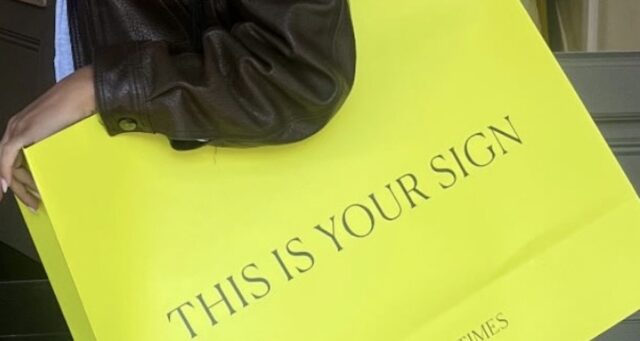
Lauren Di Bartolo is a fashion stylist and human behaviour expert based in Melbourne. An industry innovator and founder of Australian Style Institute, she has spent decades observing the relationship between people and their clothes. She’s a regular contributor to Fashion Journal, answering our burning style questions in her fortnightly column.
We’ve all joked about ‘retail therapy’. A bad day, a breakup, a rut. A few hours spent wandering through stores or scrolling late at night, adding to cart. Shopping is often framed as a mood booster and to some extent, it is. But like any coping mechanism, when done unconsciously or excessively, it can start to mask deeper emotional patterns and even contribute to the very stress we’re trying to soothe.
For more pre-loved fashion style, advice and stories, head to our Pre-Loved section.
As a stylist and someone who’s worked with thousands of people to understand the psychology behind personal style, I’ve seen firsthand how shopping can act as both a remedy and a red flag. The truth is, what we wear and how we shop is often far less about trends and far more about our emotional state.
Retail therapy works, in part, because it gives us a quick hit of dopamine and a sense of agency. In moments where we feel powerless or stuck, buying something, especially something that feels like a fresh start, can feel deeply validating.
Why it feels good (at first)
From a neuroscience perspective, purchasing something new stimulates the brain’s reward system by releasing dopamine. You browse, you buy, you feel good.
There’s anticipation, satisfaction and often a belief that the ‘new’ item will help you become a slightly better version of yourself. This isn’t inherently bad. Shopping can be a creative outlet, a ritual of self-expression or even a way to reconnect with your identity when everything else feels blurry.
When someone tells me they’ve ‘got nothing to wear,’ they’re rarely talking about clothes. What they’re really saying is, ‘I don’t feel like myself’. While some people can think of nothing worse than shopping, for those who enjoy clothes, even browsing or the anticipation of a purchase can give us a boost.
Shopping also gives us a sense of agency. When the rest of life feels unpredictable, choosing a new blazer or lipstick can feel like taking back control. In moments of change, loss, or uncertainty, retail therapy can be a symbolic reset. This concept isn’t new – ‘The Lipstick effect’ was coined for this reason.
Let’s not forget identity, either. Clothes communicate who we are or who we want to be. In this way, shopping becomes a way to curate a more confident version of ourselves. And sometimes, when we’re not sure where we’re headed in life, we dress for the person we hope to become.
When retail therapy descends into something else
Like any quick fix, retail therapy can have a shadow side. The short-term mood boost is just that, short. If we’re regularly relying on purchases to lift our spirits without knowing what we need, we put ourselves at risk of falling into a spiral.
There are red flags it’s worth looking out for. The first is that you’re shopping to avoid something, whether thats a decision you need to make or an uncomfortable truth. The second is that you feel a dopamine crash or guilty, soon after purchasing.
Other red flags include hiding your shopping habits, spending money you don’t have and accumulating debt, or leaving your clothes unworn in your wardrobe. This doesn’t mean every spontaneous purchase is a problem. Shopping can still be joyful and expressive but it’s about how we shop and questioning the why.
How to spot the pattern and reframe it
One of the best things you can do is start noticing your motivations. Awareness is the first step to breaking any loop. Before buying something, ask, ‘What emotion am I trying to feel? What am I trying to avoid?’.
Use the 24-hour rule – add it to cart and wait a day. You’ll often know if it was an emotional impulse or a thoughtful purchase.
I’d also suggest tracking what you’re actually wearing. Are your purchases translating into outfits that feel like you, or just noise in your wardrobe? If you’re stuck in a cycle of emotional shopping, it might be time to explore your own wardrobe first. Often, there’s more already in there than you think but they’re pieces that just need to be seen differently.
Shopping with intention, not emotion
Next time you feel the urge to shop your feelings away, pause. Ask yourself what you really need and whether another pair of shoes will do the trick or if it’s something else that is asking for your attention. Because in the end, no outfit can fix your problems. But the right outfit, worn for the right reasons, can be an invaluable tool for self-expression and confidence.
For more on retail therapy, try this.
This article The psychology behind retail therapy: Why we shop when we aren’t okay appeared first on Fashion Journal.
2025-05-30 06:56:00
#psychology #retail #therapy #shop #arent
Source link
















